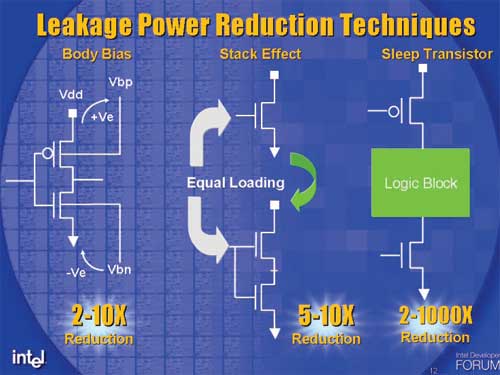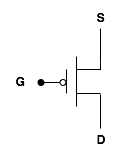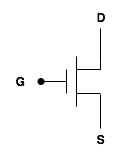Understanding the Cell Microprocessor
by Anand Lal Shimpi on March 17, 2005 12:05 AM EST- Posted in
- CPUs
Manufacturing, Die Size and Clock Speed
Intel's superiority in manufacturing is responsible for the majority of their technological advances in microprocessors over the past decade, and it's often argued that there isn't a company around that could come close to matching Intel's manufacturing abilities - with the exception of IBM.The Cell prototype boasts some pretty major manufacturing specs:
- 90nm SOI manufacturing process
- 221 mm2 die area
- 234M transistors
- > 4GHz observed clock speed
When it was first announced, the chip sounded massive, but its specifications compare extremely well to Intel's upcoming Pentium D processor; let's take a look at its vitals:
Intel Pentium D Processor
- 90nm strained silicon manufacturing process
- 206 mm2 die area
- 230M transistors
- 2.8GHz - 3.2GHz clock speed
With a slightly larger chip and a few million transistors more, Cell is supposed to be able to run at a minimum of 25% higher clock frequency than Intel's forthcoming Pentium D. We'll let that sit in for a moment...
Dynamic Logic
At first glance, a 90nm SOI Cell running at between 3 - 5GHz looks extremely impressive. After all, the fastest 90nm CPU IBM currently produces runs at 2.5GHz, not to mention that even Intel, the king of clock speed, can't mass produce anything faster than 3.8GHz on their 90nm process. But let's dig a little deeper.The Pentium 4 has two ALUs that run at twice its internal clock speed - so in the case of a Pentium 4 660, that means that two of the more frequently used execution units operate at 7.2GHz - on a 90nm process. So, it's possible to get circuits to run at higher clock speeds, even in the 3 - 5GHz range, on current 90nm processes - it just takes a little bit of creative logic design.
It's been confirmed that Cell is using some sort of dynamic logic as opposed to static CMOS in order to control transistor counts and improve operating frequencies. Intel uses a number of specialized logic techniques in their double-pumped ALUs to reach their 7GHz+ operating frequencies, and Intel has discussed techniques that are similar to the dynamic logic used in Cell.

The diagram on the right of a "sleep transistor" should look very familiar by the end of this article
Transistors and You
Just about any AnandTech reader who has followed our CPU articles has heard us count transistors before, but understanding how transistors work is quite critical to understanding how IBM can talk about 3 - 5GHz clock speeds for Cell.We'll spare you the details about how transistors are made and the physics behind them in an attempt to keep this section as brief, but as informative, as possible. It's quite common to refer to a transistor as a "switch" much like a light switch, so how does a transistor function like a switch? Below, we have a representation of a p-type transistor:

The input to the gate of the p-type transistor is what makes it function as a switch. If you apply the right voltage to the gate, thus making it a logical "1" or high, current doesn't flow in the transistor. If you don't apply any voltage to the gate, current can flow. Just like a light switch, flip it one way and the light turns on; flip it another and you're in the dark.
There's another type of transistor that we'll be talking about here: the n-type transistor:

CMOS circuits work by using pairs of n- and p-type transistors (that's where the Complementary element of CMOS comes from). CMOS circuits are by far the most predominant in modern day microprocessors, but as you will soon see, that doesn't mean that they are without flaws.










70 Comments
View All Comments
WishIKnewComputers - Thursday, March 17, 2005 - link
Well, I dont really see the Cell 'breaking' in any way. Between being in the PS3, IBM servers/supercomputers, and Sony and Toshiba electronics, the chip will be all over the place.As for it showing up in PCs... no it wont happen anytime soon, but I really dont think it's intended to at this point. Workstation and playstations are its main concern, and smartly so. The Cell in its first generation isnt cut out for superior general tasking, obviously, but when those things start pumping out (and they will... the PS2 has sold what, 80 million units?), there will likely be different and more advanced versions. And if some of those are changed for enhanced general purposing somehow or another, then they could have shot at entering the PC world. As for taking on Intel, though... I dont think IBM is even considering that. If I had to guess, if they wanted to be in a PC, they would have OS X adapted to Cell and IBM would have these things in Apples.
But no matter which way they go, is it me or does IBM seem light-years ahead of Intel? After looking at Intel's future plans, it seems that they are trying to move towards what IBM is doing now. So is the Cell a processor just ahead of its time, or has Intel just gotten behind?
AnnihilatorX - Thursday, March 17, 2005 - link
This article is seriously a kill for a child like me. I appreciate it though. Well done Anandtechravedave - Thursday, March 17, 2005 - link
I can't wait to see what devlopers thing of the cell & the SDK's for it. I have a feeling thats what will kill the cell or make it successfull.microbrew - Thursday, March 17, 2005 - link
"System on a Chip (SoC)"What will make or break the Cell is the tools available, especially the operating system and libraries.
I would like to see what they're doing in terms of marketing the chip to consumer electronics, telecom, military and other embedded applications. I could see the Cell as a viable alternative to the usual mixures of PowerPcs, ARMs and DSPs.
I also agree with Final Words; I don't see the Cell breaking into the consumer PC market any time soon either.
Locut0s - Thursday, March 17, 2005 - link
#17 Yeah that was a bit too harsh I agree.Eug - Thursday, March 17, 2005 - link
I'm just wondering how well a dual-core PPE-based 4+ GHz chip would do in general purpose (desktop) code.And I also wonder how cool/hot such a chip would be. The Xbox 2's CPU is probably a 3-core PPE, but it runs at 3 GHz, and we don't have power specs for it anyway.
Filibuster - Thursday, March 17, 2005 - link
#11 (well, everyone should if they haven't before) read the Arstechnica article on PS2 vs PC - static applications vs dynamic media. Cell is taking it to the next level.http://arstechnica.com/articles/paedia/cpu/ps2vspc...
Very nice article Anand!
Googer - Thursday, March 17, 2005 - link
Besides a release date, is there any news or knowledge of a Linux Kit for Playstation 3 like there was for PS2? Does anyone KNOW OF Either?Illissius - Thursday, March 17, 2005 - link
Damn. Awesome article. If I hadn't known the site and author beforehand, I would've guessed Ars and Hannibal. Seems he isn't the only one with a talent for these kinds of articles ;)You should do more of them.
scrotemaninov - Thursday, March 17, 2005 - link
#22: This is just a guess so don't rely on this. The POWER5 has 2way SMT. Each cycle it fetches 8 instructions from the L1I cache. All instructions fetched per cycle are for the same thread so it alternates (round robin). It also has capabilities for setting the thread priority so that you effectively run with 1 thread and it just fetches 8 instructions per cycle for the one running thread.I would expect the PPE to be similar to this, fetching 2 instructions for the same thread each cycle. The POWER5 has load balancing stuff in there too - if one thread keeps missing in L2 then the other thread gets more instructions decoded in order to keep the CPU functional unit utilisation up. I've no idea whether this kind of stuff has made it over into the PPE, I'd be a little surprised if it has, especially seeing as this is in-order anyway so it's not like you're going to be aiming for high utilisations rates.